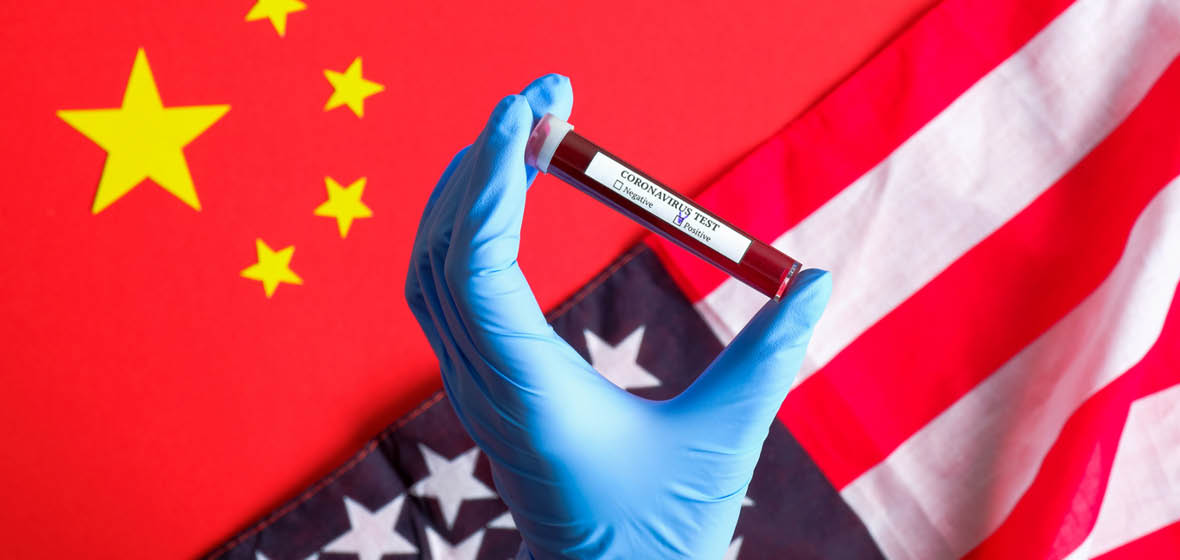Can you sue a country for covering up a pandemic?
This is the question international lawyers are grappling with, after a handful of legal cases and petitions have been filed in courts around the world seeking to make the People’s Republic of China pay for the global economic and health devastation caused by COVID-19.
The trend began in March in the US – the country that has thus far suffered the highest death toll and appears likely to bear an economic burden in the trillions of dollars. It also happens to hold the title of “most litigious society in the world”, spending as much as 2.2 percent of total gross domestic product (GDP) on tort litigation, according to a report by economics professor Paul Rubin from Emory University.
At least four separate suits have been filed against the Chinese government in Florida, Texas and Nevada by a variety of groups including healthcare workers, lawyers and advocacy groups like Freedom Watch. Claim documents assert the Chinese government, at best, covered up the coronavirus outbreak, downplayed its dangers and censored whistleblowing Chinese doctors who tried to sound the alarm in Wuhan in December. At worst, the suits suggest the coronavirus could have been “designed” by Chinese scientists in Wuhan laboratories to kill mass populations – thus breeding a biological weapon of mass destruction.
But it’s not just the world’s litigation capital that wants to make China pay. In April, the London-based International Council of Jurists and All India Bar Association filed a joint complaint in the United Nations Human Rights Council, seeking reparations from China for violating international health regulations and humanitarian law by withholding information and negligently enabling the global spread of coronavirus.
But – in the words of defendants in the famous English tort case of Carlill v Carbolic Smoke Ball Company – will these claims amount to anything other than “mere puff”?
Facts in dispute
University of Sydney Professor and international law expert Tim Stephens says such legal claims make for an interesting theoretical discussion but are not often successful. The first major flaw he sees with the coronavirus suits that have been filed in the US is that scientists would – and already do – disagree on the facts of where and how the novel coronavirus originated.
“Litigants need to know with some certainty what the origins of the pathogen were. And more than that, there needs to be some science around the probability of this virus emerging generally,” Stephens says.
“Many viruses are around the world and their spread occurs due to incredibly bad luck. From a legal perspective – in order to find fault, we have to be able to point to some kind of culpability or liability on the part of the defendant.
“Looking at the liability of the Chinese government, I don’t think we can blame the government for themselves having caused the outbreak. But there may be some secondary responsibility because they have covered it up, or they haven’t been prompt in trying to control the outbreak, they haven’t shared enough information with the world.”
Can we put a price on coronavirus?
At this early stage in the global pandemic, it seems hard to put a price on the dramatic loss of lives and livelihoods caused by COVID-19. But it hasn’t stopped litigants from trying.
One suit – led by conservative lawyer and former US prosecutor Larry Klayman – is seeking US$20 trillion in damages. This would be a payout larger than China’s annual GDP, which was US$14 trillion in 2019.
A research paper by British think tank The Henry Jackson Society has calculated that G7 nations could claim at least AU$6 trillion in damages from China, which, it says, failed to learn from the SARS epidemic of 2002 and deliberately withheld information about COVID-19 from the world. The report points specifically to Prime Minister Scott Morrison’s unprecedented $130 billion in federal government spending for workers and businesses and calculates Australia could claim $37 billion in compensation for the specific damage caused to our economy.
“By computing the cost of damage caused to advanced economies and assembling a series of possible legal processes to which the rules-based order can have recourse, we offer a sense of how the free world might seek recompense for the appalling harm the CCP [Chinese Communist Party] has done,” writes Matthew Henderson, a co-author of the report.
But Stephens believes no international legal forum exists to hear such a case.
“There is no court, to my knowledge, where you could litigate these claims,” Stephens says.
“China does not accept the compulsory jurisdiction of the International Court of Justice. For that matter, the United States doesn’t accept it either. “
Stephens explains that sovereign immunity would protect China from liability. This is an international common law doctrine, also expressed in the US Foreign Sovereign Immunities Act (FSIA) of 1976, which holds that foreign governments enjoy immunity from civil and criminal jurisdiction in the US. The FSIA allows some exceptions for governments conducting commercial activities or for territorial torts, but the reality is China could completely ignore any decision made in a US court and there would not be much that US litigants could do to enforce it.
Is there a precedent for this kind of suit?
Despite the barriers to litigation, Stephens says there have been a handful of international cases in which litigants have successfully sued foreign entities.
Perhaps the most famous was the 1935 “Trail Smelter Case” between the US and Canada. American farmers successfully sued a Canadian mining company and were awarded more than US$400,000, for transnational air pollution caused by smelter works in British Columbia traveling to Washington State and causing damage to their crops, forests and clean air.
“That was a case about transboundary pollution, which is interesting because it is a similar situation to the transboundary issues and impact caused by coronavirus,” says Stephens.
The Trail Smelter example involved US and Canadian government cooperation to establish a joint commission to investigate the suit and award reparations. The same cooperation seems unlikely between the US and China, given the myriad inflammatory comments US President Trump has made about the “Chinese virus”.
There are potential alternatives to claiming monetary damages, though. Stephens uses the example that when Iran began seizing US property after the Iranian revolution in 1979, the US government responded in kind by expropriating vast amounts of Iranian property in the US.
“Maybe we would get to a similar stage between the US and China,” Stephens muses. “But we’d only get there if the Trump administration said, okay we are going to start confiscating Chinese property in the US – whether publicly or privately owned.
“We would have to expect the Chinese government to respond by seizing US properties and companies – whether it be Amazon factories, whether it be the Apple stores and factories in China. I can’t see that happening. The economic interests of those two countries are too deeply connected and entrenched for any complete breakout.
“But who knows; the world is on edge right now and weird things can happen.”




